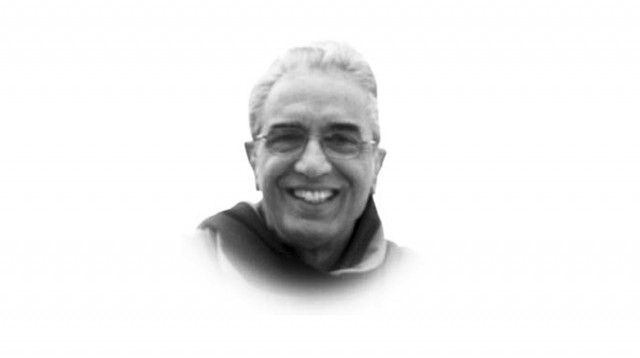Let’s help our college
Alumni association should focus efforts on maintaining, enhancing content, quality education in the college.

The college, now a university, was the brainchild of George Roos-Keppel — the then British chief commissioner of the province, and Sahibzadah Abddul Qayyum, a son of the soil, a civil servant and, later, a politician — and was conceived as a liberal arts college, emulating the Aligarh model. It has served the people of Khyber-Pakhtunkhwa well, in producing generations of successful professionals, civil servants, diplomats, judges, generals, politicians and businessmen.
Among other things, the college was also known for its magnificent buildings, vast green spaces and playing fields and its roads lined with bitter-orange trees, which, when in blossom, would fill the air with exhilarating fragrance. Whenever I think of the college, I think of the fragrance-filled air in the evenings. (The college building also appears on the Rs100 currency note.)
The ICP students, in the pre-1970 era, stood out anywhere in the city because of their black sherwani, tailored in a standard style and length, white shalwar and, I like to think, their neat and tidy looks — hair dabbed with Brylcreem and combed in the glistening styles of the Hollywood icons of the time. No gel those days, and rarely a beard. In January this year, a meeting of the alumni association at the college offered me an opportunity, after many years, to visit the campus. Visiting one’s college always brings back old and happy memories. But I must confess my visit was a disappointment. It erased some of the beautiful images preserved in my mind for all these years. Many of the green spaces are gone. The lawn-tennis courts in front of our hostel have been taken over by a concrete monstrosity, blocking the view of the college building.
I went to look up Hardinge Hostel, along with my friend and roommate, Mian Jameel, where we had spent two of the happiest years of our lives. It looked distressed, as if crying for help.
Some renovations, spotty and out-of-character, were conspicuous: the brick-paved pathway at the entrance replaced with unattractive terrazzo; brick walls painted dull red to hide the marks of dampness; the columns lining the arched verandahs, each painted with an attribute of God. (I am not sure if this misplaced show of religiosity would please God, but it sure will make the architect of this beautiful building turn in his grave.) The hedge, lining the path in the courtyard, was covered with laundry — shirts, shalwars and towels — hung to dry in the sun, like in a dhobi ghat.
We found three students standing at the gates of the hostel, basking in the sun. All three wore beards and woolen shawls. It was a cold morning. They readily escorted us inside. Of the three, one assumed the leadership role in showing us around and asked intelligent and engaging questions about our time in the college. The other two remained uninterested. Our visit didn’t seem to prick their curiosity.
I wanted a picture taken of myself with my friend and roommate with our old room in the background. I asked the escorts, not anyone in particular, if they would take our picture. The ‘leader’ readily offered his services and asked me to show him how to operate my digital camera. The other two showed no interest, probably the job was too complicated for them.
Pictures taken, we walked back to the gate. Just then, out of curiosity, I asked the ‘leader’ what class was he in. He said he was the chowkidar (the gatekeeper) but the other two were students!
My suggestion to the alumni association will be to focus their efforts on maintaining and enhancing not only the physical beauty and the environment of the college but also bringing the content and quality of its education to meet the requirements of the times. If we do that, it will be the biggest monument to the services of both its founders, George Roos-Keppel and Sahibzada Abdul Qayum. Let’s work on the college.
End-piece: The university’s vice-chancellor, Ajmal Khan, was abducted by militants more than a years ago. He is still in captivity.
Published in The Express Tribune, September 23rd, 2011.


1729685382-0/Untitled-design-(57)1729685382-0-208x130.webp)











COMMENTS
Comments are moderated and generally will be posted if they are on-topic and not abusive.
For more information, please see our Comments FAQ